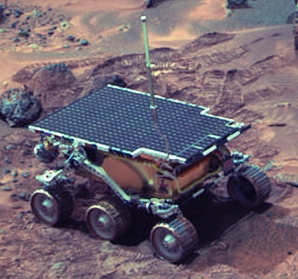Questions & Answers
 |
- What's the difference between photovoltaic solar and thermic solar?
While a photovoltaic solar system produces electric energy
- How much photovoltaic energy is needed for a house?
This is a very difficult question to answer as it depends on many variables, such as the geographic position of the house, weather conditions, the number of domestic appliances, etc. In any case, we can estimate an average annual energy requirement of 3000 kWh
- How much does photovoltaic electric energy cost?
The cost of photovoltaic energy is obtained by adding together investment costs (planning, photovoltaic system
- How can we save electric energy for domestic use?
In Italy, domestic electric energy consumption accounts for 23% of the nation’s electricity consumption, of which about 6 billion kWh goes on domestic lighting. Savings can be made by changing our behaviour - for example, by switching off the lights in rooms that are not in use, choosing lighting which uses fewer lightbulbs, placing the fridge in a ventilated position far from heat sources and adjusting the thermostat to medium, using low temperature washing machine programmes, etc. If we put these measures into practice, ENEA estimates a saving of 10-20%.
As far as lighting is concerned (annual consumption of about 400 kWh for the average family), replacing conventional lightbulbs with low energy consumption bulbs allows a saving of up to 70%.
By replacing our old domestic appliances with those certified as high efficiency
Overall, ENEA has estimated that electricity consumption for a typical family could be reduced without too many sacrifices by up to 40%.
 Fig. 1: High efficiency photovoltaic cells mounted on the "Sojourner" vehicle, which began exploring Mars in 1997. Credit: (NASA) |
- What’s the "energy cost" of a photovoltaic panel? How long must a panel be used before recovering the energy used to build it?
Photovoltaic modules must be in use for a certain number of years in order to generate the energy spent for their construction (extraction of raw materials, transport, manufacture, etc). This energy, called "grey energy", depends on the manufacturing technology and varies between 3-4 MWh/kWpeak for amorphous silicon and 5-7 MWh/kWpeak for mono or polycrystalline silicon. Consequently, the energy recover time of a system may vary from 3 to 6 years, depending on the type of module and where the system is installed.
- Which is the largest photovoltaic station in Italy? How much energy does it produce?
The largest photovoltaic station in Italy is the ENEA station in Serre (SA). It covers about 5.5 hectares of land and has been in operation since 1995. The surface of the installed panels is 2.65 hectares, for a nominal power of 3.3 MWpeak. The most important Italian plants are found in central and southern Italy, where there is more insolation
- How does the average power and energy generated by a photovoltaic station compare with that of a traditional station?
If a traditional station of 100 electric MW functions for 80% of the time (the rest being spent on maintenance), in one year it will produce a total quantity of electric energy
W= 100 MW x 0.80 x 365 x 24 = 700800 MWh per year = 701 GWh per year.
In one year, our small photovoltaic system in Bologna produces on average W = 0.15 MWh/m2 per year.
Therefore, a photovoltaic station which at our latitude produces a quantity of energy equal to that of a traditional 100 electric MW station, must have a surface area
S = 700800 MWh / 0.15 MWh/m2 = 4672000 m2 = 4.7 km2
To this we must add at least 2 km2 for manoeuvring and maintenance space. The Caorso nuclear power station, which was closed down in 1986, was the equivalent of a photovoltaic station with a surface area of approximately 45 km2 covered with panels.
- What fraction of solar energy is effectively converted by photovoltaic systems?
The density of power arriving from the sun to the surface of the earth’s atmosphere is 1353 W/m2 (solar constant), which in terms of energy is the equivalent of about 32.5 kWh/m2/day.
Bearing in mind the rotation of the earth, at our latitude (40° North), the average insolation on the surface of the atmosphere is about 8 kWh/m2/day, corresponding to about 2900 kWh/m2/year.
In crossing the atmosphere, the solar radiation is partly absorbed and diffused and the average insolation is reduced to about 5,5 kWh/m2/day, which corresponds to about 2000 kWh/m2/year. This value refers to clear atmospheric conditions; clouds and fog reduce effective insolation considerably. Data gathered by weather stations and averaged out over time allow us to be able to plot maps of isoradiative curves showing the average daily values for various locations: for example, Bologna = 3.9 kWh/m2/day, about 1420 kWh/m2/year.
The energy captured by photovoltaic modules
At our latitude, maximum energy is captured with a tilt of approximately 30° and azimuth 0°. In this case, there is about a 10% improvement compared to panels placed horizontally. If, however, the surfaces shift from a Southern orientation by an angle of up to 30°, the reduction in captured energy remains limited.
In conclusion, if the electric energy produced is worth about 150 kWh/m2/year (0.41 kWh/m2/day), as in the case of our system in Bologna, the conversion efficiency is around 10.5% compared to the effective insolation on the ground. The clouds reduce by an average of 30% the solar energy that our system can convert. Compared to the daily insolation outside the atmosphere, at our latitude, the energy effectively transformed into electric energy is ~5%.
- F. Casali, "Energia Pulita: quale?", Cappelli Editore, 1987.
- N. Armaroli, V. Balzani. "Energia, oggi e domani", Bononia University Press Editore, 2005.
- V. Spezia "Energia: quale futuro", Le Scienze, giugno 2005, pag 42.
- D. Bonacorsi, G. Giacomelli, G. Mandrioli, "Energia, Ambiente e Salute", DFUB 2003/05. Presentazione all'Accademia delle Scienze, 23 maggio 2002.
- S. Castello, "Aspetti tecnici ed economici della tecnologia fotovoltaica". Progetto:"Il sole a scuola", www.enea.it